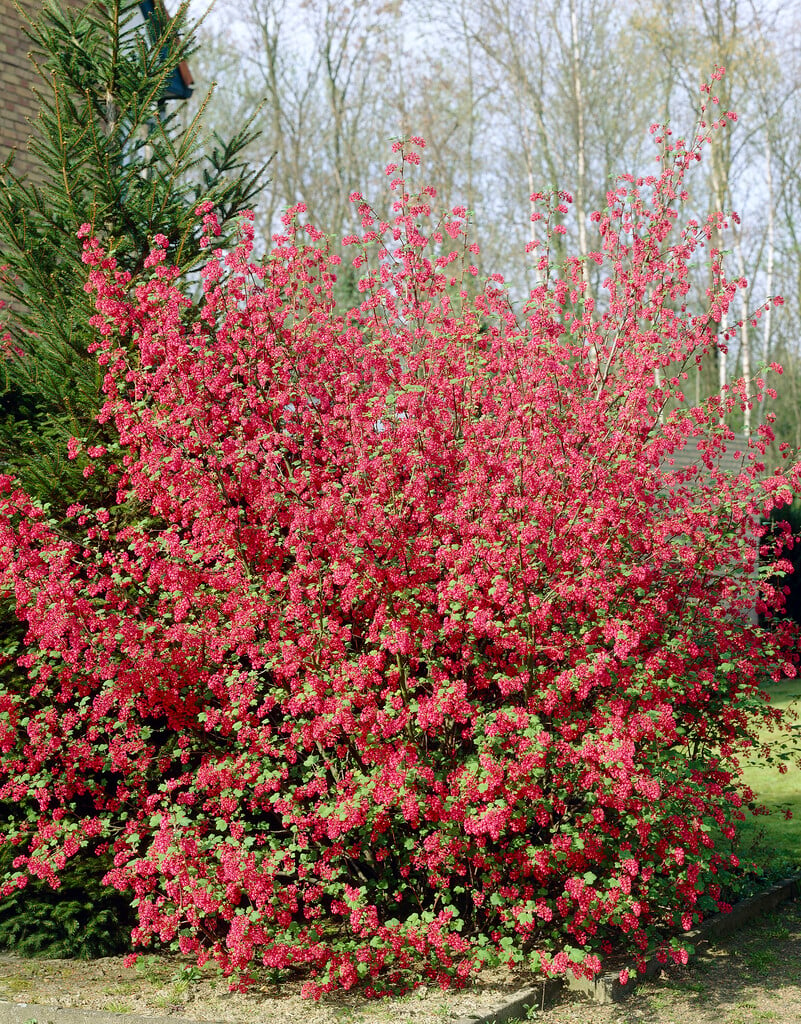Ribes sanguineum
flowering currant
A vigorous deciduous shrub with lobed, aromatic, green leaves. Pendant racemes of reddish-pink tubular flowers in spring are followed by spherical, blue-black fruit.
Size
Ultimate height
1.5–2.5 metresTime to ultimate height
5–10 yearsUltimate spread
1.5–2.5 metresGrowing conditions
Moisture
Moist but well–drainedpH
Acid, Alkaline, NeutralColour & scent
| Stem | Flower | Foliage | Fruit | |
| Spring | Pink Red Yellow | Green | ||
|---|---|---|---|---|
| Summer | Green | |||
| Autumn | Green | Black Blue | ||
| Winter |
Position
- Full sun
Aspect
East–facing or North–facing or South–facing or West–facing
Exposure
Exposed or Sheltered Hardiness
H6Botanical details
- Family
- Grossulariaceae
- Native to GB / Ireland
- No
- Foliage
- Deciduous
- Habit
- Bushy
- Genus
Ribes can be deciduous or evergreen shrubs, sometimes spiny, with simple, usually palmately lobed leaves and small tubular or bell-shaped, solitary or racemose flowers borne in spring or summer, followed by juicy, sometimes edible berries
- Name status
Correct
- Plant range
- Western N America
How to grow
Cultivation
Easy to grow in moderately fertile, well-drained soil in full sun. Useful for informal hedging
Propagation
Propagate by hardwood cuttings in winter
Suggested planting locations and garden types
- Cottage and informal garden
- Wildlife gardens
- Flower borders and beds
- Hedging and screens
Pruning
Pruning group 2 or Pruning group 13 if wall-trained, in late summer; trim hedges after flowering
Pests
May be susceptible to scale insects, gall mites, gall midge and aphids
Diseases
May be susceptible to currant leaf spot, powdery mildews, coral spot, rust diseases and sometimes honey fungus
Love gardening
Sign up to receive regular gardening tips, inspiration, offers and more
View our Privacy Policy
Get involved
The Royal Horticultural Society is the UK’s leading gardening charity. We aim to enrich everyone’s life through plants, and make the UK a greener and more beautiful place.

